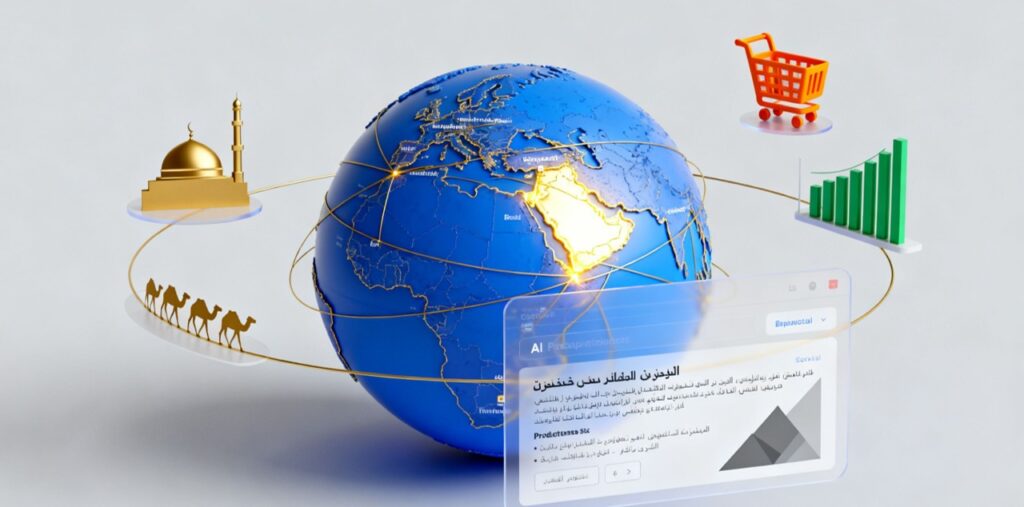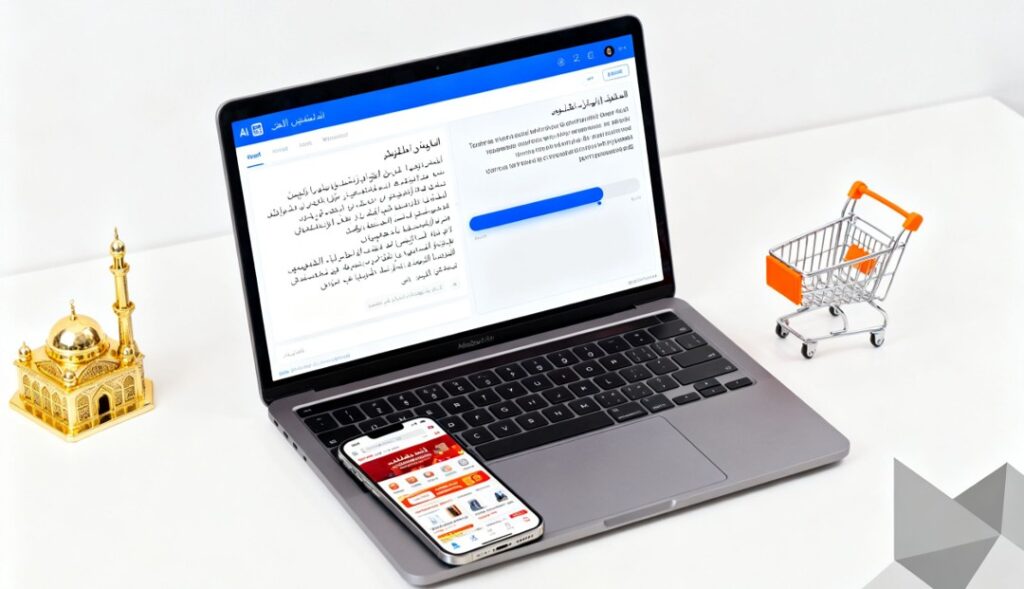The e-commerce market in the Middle East is experiencing rapid growth, particularly in Saudi Arabia, where the market is projected to exceed USD 27.37 billion by 2029, leading globally in both penetration rate and digital payment adoption. However, small and medium-sized enterprises (SMEs) often encounter bottlenecks in this market, primarily due to localization challenges such as language barriers, cultural differences, difficulties in traffic acquisition, and low conversion rates. Based on market data and practical experience, this article provides an in-depth analysis of the key pain points in Middle Eastern e-commerce for cross-border e-commerce and overseas brand clients, and offers systematic, localized solutions to help businesses overcome growth barriers and achieve long-term sustainable development.
Language barriers represent the first challenge in Middle East localization. The region encompasses multiple languages including Arabic, Persian, and Turkish, as well as regional dialects and cultural nuances. SMEs without professional support often face customer misunderstandings and damage to brand image due to translation errors. Traditional human translation is costly, while machine translation struggles to accurately convey industry-specific terminology and adapt to local cultural contexts. Emerging AI-powered multilingual content generation technology enables businesses to rapidly achieve multilingual coverage at low cost through foundational content building, industry terminology customization, and regional expression adaptation, thereby significantly enhancing localization capabilities.

Inadequate cultural adaptation is another limiting factor. Consumer purchasing decisions in the Middle East are heavily influenced by religion and traditional culture. For example, green elements are widely used due to their positive religious associations, whereas certain animal imagery may provoke aversion. Contextualized content around key festivals such as Ramadan and Eid is more likely to resonate and drive engagement, and collaboration with local KOLs can significantly enhance brand visibility. Additionally, the region is transitioning from cash-on-delivery (COD) to online payments, with consumer payment preferences and environmental consciousness shaping complex purchasing psychology. Businesses must precisely design payment processes and marketing strategies to improve user retention.
Traffic acquisition challenges stem from the dominance of top sellers within platforms and the fragmented nature of external channels, which are difficult to manage cohesively. Companies must leverage intelligent SEO tools and data-driven channel-matching systems to precisely place industrial products on professional procurement platforms, and use local e-commerce alliances and social media to achieve multi-dimensional consumer touchpoints for consumer goods, avoiding wasteful traffic spending and significantly improving return on investment. A diversified channel strategy enables SMEs with limited resources to achieve stable and high-quality conversion traffic.

In terms of conversion rates, building a trust system and optimizing service experience are equally critical. Logistics speed, payment flexibility, and customer service responsiveness are the three most important factors for consumers. By implementing local warehousing and delivery solutions, businesses can reduce delivery times to 2–3 days, offer flexible payment options including COD and local online payment, and ensure customer service response within 24 hours. These measures effectively enhance consumer trust and significantly improve purchase conversion rates.
From a technology-enabling perspective, lightweight localization tools such as LnRu empower SMEs with AI-driven multilingual content generation, intelligent channel matching, and operational efficiency tools, enabling them to build a full-process localization system. Its closed-loop approach of “basic generation – professional optimization – regional adaptation” significantly reduces labor and time costs, helping small and medium sellers achieve precise market entry and sustained growth in the Middle East.

Real-world cases also validate the effectiveness of these strategies. A home goods company, using AI translation combined with local proofreading to correct grammatical errors, created contextually appropriate Ramadan-themed videos. Within three months, it achieved an 801% traffic increase and a conversion rate of 3.51%, quickly rising to a leading market position. The smart home brand SwitchBot gained over 5 million video views through short-form videos demonstrating local lifestyle integration, successfully targeting high-value households with a repurchase rate far exceeding the industry average.
It is evident that the localization challenges in the Middle Eastern e-commerce market constitute a systemic issue involving language, culture, traffic, and trust. For SMEs to succeed in this blue ocean market, they must leverage precise insights and AI technology to significantly enhance localization efficiency and depth, creating maximum value with optimal investment. As industry experts suggest, building a four-dimensional localization capability encompassing “language – culture – channels – trust” is the essential path to unlocking high growth. By selecting the right tools and strategies, SMEs can transition from “market entry” to “market establishment” in the Middle East, ultimately achieving sustained competitive advantage and growth momentum, and capitalizing on the opportunities of this digital economy boom.